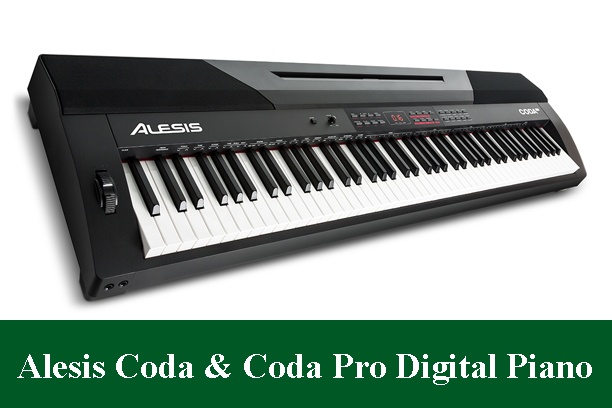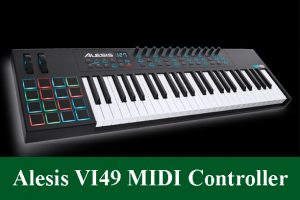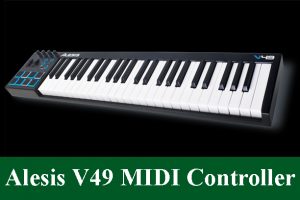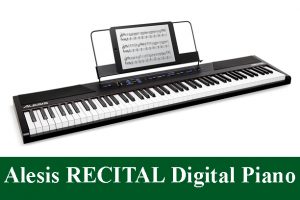Alesis Coda & Alesis Coda Pro Review (Updated)
Following a few missing a very long time from the console scene and the resonating disappointment of the 2011’s Cadenza item, Alesis attempts again to go into the moderate portion of advanced pianos advertise with its Coda arrangement, which replaces the previous with two fresh out of the plastic new items. (Alesis Coda)
Formally presented at NAMM 2015, the Alesis Coda and Coda Pro computerized pianos are the new answers for amateurs to transitional from the house established by Keith Barr. Composed in view of convenientce and moderateness, these two items are likewise firmly centered around sound and by and large quality.
The Cumberland-based organization gained from the missteps made with the Cadenza and conveyed a significantly more appealing and current item enhanced in the entirety of its principle highlights, offering two diverse console composes and another implicit sound motor, made as a team with AiR Music Technology and SONiVOX, two of the world’s most famous music programming organizations.
Features
Looking at the Alesis Coda and Alesis Coda PRO
The new Alesis section level item comes in two unique models: the standard $399.99 Coda and the $499.99 Coda Pro. Both offer a similar plan and primary highlights, however while the first is a 88-key semi-weighted advanced piano, the Pro model offers rather a 88-key weighted activity console, or, in other words a superior decision for piano understudies, instructors and live performers.
The Alesis Coda / Alesis Coda Pro box substance
- Coda or Coda Pro 88-key digital piano
- Outer 12V power connector
- Piano-style maintain pedal
- Music stand
- Client direct
For an extra $149.99, you can change both Coda and Coda Pro in an upright advanced piano because of the discretionary Coda Piano Stand, an exquisite bit of wooden furniture which incorporates the three pedals-Soft, Sostenuto, Sustain and the half-pedal usefulness, and can be associated with the console through a solitary link.
An Easily Portable Machine
The principal discernible change between the old Cadenza and the new model is obviously in the style: Alesis surrendered the antiquated plan of the past piano and grasp a superior looking present day configuration, by putting two major speakers in the highest point of the level frame and making an immense facelift to the format and the primary controls interface.
The frame itself currently includes an additionally persuading blend regarding materials in both clear and matte completions, which enables the Coda and Coda Pro to be significantly more appealing than its forerunner. Notwithstanding the 88-key augmentation and the piano measurements, the two models are extremely lightweight (just 23.6 pounds for the Coda, around 27.6 pounds for the Coda Pro, half than the heaviness of the past model) and offer a simple setup and conveyability for any circumstance.
The fundamental interface incorporates a power switch, a volume handle, a LED show, 16 catches to control MIDI, Metronome, Patterns, Split/Layer, Transpose, Duet mode, with another 10 catches used to control the 20 worked in voices. Different alternatives can be overseen utilizing the SHIFT catch, in addition to the related note on the console.
On the left, a pitch twist wheel permits to raise and lower the notes at present being played. On the back side, we discover a USB port, a MIDI out, the Sustain jack, an AUX I/O and the power jack, while in the front side we discover two earphones yield.
Sound and More
While the Cadenza terrific piano fix sounded dreadful, the new piano example from SONiVOX and AiR truly has the effect between the two Alesis models.
Coda and Coda Pro are presently lined up with the best items in the passage level market (like the new Yamaha P-45) and highlight an extraordinary piano example, which sounds as great in the center area as in the lower part. The fabulous piano tone takes into account an extremely common playing sound, on account of the 64-note polyphony, which enables you to keep/maintain more notes while squeezing the support pedal or utilizing the Split/Layer mode.
Alesis extended the accessible sounds set from the Cadenza display by signifying 20 distinctive presets, including two Grand Piano sounds, three Electric Piano tones, Harpsichord, Clavinet and Vibraphone voices, five diverse Organ sounds (from Church Pipe Organ to the B3-like Rock Organ), Accordion and Harmonica, Electric Guitar and Fingered Bass, two Strings sounds and a Percussion set.
The capacity to part or layer two unique tones (or do both, being watchful of the aggregate accessible polyphony) enables Coda and Coda Pro to accomplish an exceptionally rich and flexible scope of voices, considerably more extensive than contenders, for example, Yamaha. Obviously, we are discussing fundamental sounds and not proficient ones, but rather it merits specifying that some presets sounds especially great, likewise on account of the coordinated DSP, which adds some awesome impacts to the blend.
Another huge change from the past model is the new 88-key mallet activity weighted console picked by Alesis, which replaces the unpleasant Cadenza’s keybed and offers much sensible sentiments while playing. Obviously, clicking clamors are still there, yet at any rate the general nature of the new console meets the gauges of contenders’ items.
Alesis Coda versus Alesis Coda Pro
Having two separate items varying just in the weighted keybed (semi-weighted versus pound activity weighted console), you may make the accompanying inquiry: how would I pick among Coda and Coda Pro?
Indeed, the conspicuous decision is supportive of Coda Pro, which offers a more flexible decision helpful for any circumstance, from concentrate to gigs, from practices to being utilized as a USB controller to deal with your VSTs. Remember that, beside the distinctive console composes and weight, the two models’ highlights are essentially the equivalent. In this way, eventually, your decision boils down to how the piano keys feel under your fingers, how overwhelming it will be to move from area to area, and the amount more cash you’re willing to spend.
In light of that, on the off chance that you are an educator, it’s anything but difficult to propose the Coda Pro for its sledge activity keybed. Because of the Duet mode, you can part the console in two sections for playing alongside your understudies. You can even check use the two earphones yields with the goal that you can rest guaranteed you’re not exasperating any other person in the piano studio or house. You can likewise utilize the implicit metronome or record specifically on your console utilizing the coordinated 2-track recorder, which takes into account up to five tunes to be recorded.
On the off chance that you are a performance performer, the Styles and Songs areas enable you to play along a wide assortment of melodic classifications (from shake to blues, from fly to jazz, and so forth.) and even quiet a particular piece of a play-along tune to play out your performance. For this situation, picking among Coda and Coda Pro would just rely upon your enthusiasm of having (or not having) a completely weighted console under your fingers.
On the off chance that you are a live or studio performer, by picking the Alesis Coda Pro, you can secure an extraordinary computerized piano appropriate that has a few awesome highlights and in general purposes. With the USB port, you can change the Coda Pro into a controller for utilizing your most loved VSTs (which can be controlled with the Pitch Bend, missing in the majority of contender’s models), while the MIDI yield can be utilized with outer expanders and sound modules to make exceptionally complex setups.
The Aux input enables you to associate an outer sound source (like drum machines or support tracks), while the Aux yield enables you to interface with a blender or computerized recorder without utilizing the earphone outs.
In any case, if you will probably play for entertainment only and have an extraordinary, to a great degree lightweight advanced piano, at that point you may think about sparing $100 and purchasing the standard Coda. Obviously, while the Coda is extremely incredible for playing the organ and Rhodes voices, it doesn’t offer a similar inclination and responsiveness of the Coda Pro’s mallet activity keybed, however it’s as yet a decent trade off considering its last retail cost.
Conclusion
After the Cadenza’s failure to discharge, Alesis has at long last reclaimed its name by making another arrangement of advanced pianos, the Coda’s, which offer two distinct items intended for understudies, educators, live performers and that’s just the beginning. Both Coda and Coda Pro offer a wide exhibit of alternatives that are especially awesome for a $399-to-$499 advanced piano. Alesis would now be able to feel good confronting its rivals, as they’ve made a commendable and advantageous item, and apparently a standout amongst other spending plan computerized pianos available.





